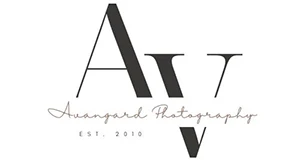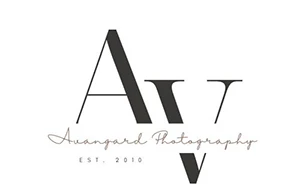5 Wedding Photography Tips And Tricks You Need To Hear!
Hello wonderful human beings Sheldon here and in this week’s video we’ll be going over five tips that will help you improve your wedding photography. If you’ve never shot weddings before these are five things you definitely need to know. So without wasting any more of your time let’s jump right into it.
Tip number one, which is kind of a non-tip and something that you shouldn’t do and that is just get started or just jump into wedding photography. The reason being is that there’s a lot of bad advice going around on the internet that I’ve seen online, that you should just start shooting weddings.
If you haven’t done wedding photography before and if you start shooting you’ll gain a lot of experience, you’ll be able to shoot products, you’ll be able to shoot couples and portraits, and you’ll be able to do event photography all in one day. I think this is terrible advice! You’re risking or playing with one of the most important days in somebody’s life in order to gain experience. So if you screw up you could potentially ruin this person’s day or ruin their memories, because they have no photos to remember it.
Another reason this is a bad idea that your name is on the line as a photographer. In photography and our Toronto wedding industry your name is your personal brand, so if you screw up or make a mistake your own name is being dragged through the mud, and there’s no real way to recover from that. So instead if you want to get started with wedding photography or you want to gain more experience I’d suggest asking another photographer if you could assist them on one of their weddings.
Now there’s a difference between assisting and second shooting and not many people know the difference between these two. Assisting means that you accompany a main photographer to a wedding. That they’re shooting and you carry their bags, you move they light stands, you arrange people and you run errands.
Second shooting means that you’re just as important as the main photographer, or you’re shooting something that the main photographer can’t shoot. No photographer can be in two different places at one time so for example, if the main photographer was shooting the bride getting ready and they needed someone to capture the groom getting ready. As a second photographer that would be your job.
If you’ve never shot a wedding before I’d recommend becoming an assistant. You can contact a photographer that you admire and ask them if you’d be able to assist them on a wedding – most of the time they’ll be happy to have you as an assistant. Don’t get discouraged if they say no because in the end you’re going to want to ask a few different photographers. If you decide to work with only one photographer, after a while you will start to emulate that photographer’s style and at the end you want to develop your own wedding photography style.
I’d suggest asking a few different Top wedding photographers if you could assist at their weddings. That’s where you get a different perspective from each photographer that you assist. You can see how they handle the wedding day. How they interact with the bride and the groom. How they manage people. After a while you can even see their creative style from how they see light, how they compose their shots. I would advise that you assist at least 40 weddings before you start shooting as second photographer.
Tip number two which is to have backups of everything. You really need to invest in the gear that you need to shoot weddings. If you can’t afford a proper professional gear you can always rent it. Wedding photography and photography in general can get very expensive very quickly, especially if you have GAS – gear acquisition syndrome. About every photographer that I know has it but you can minimize it by renting your gear or buying second hand.
I emphasize renting so often because you get to play with the gear that you’ve always wished you’d like to use and shoot. So if you want a 35mm 1.4 lens but you can’t afford it, just rent it out and play with it for the day. For a wedding I’d really recommend having a full range of focal length so that you have something for every situation. You want something wide something mid-range and something telephoto. I know a lot of photographers prefer shooting with prime lenses on a wedding day. I like a Canon 50mm 1.2 lens , 85mm 1.2 lens and a 35mm 1.4.
Some wedding photographers have problems with prime lenses if their style is more of a run and gun style of photography. They shoot very quickly and it makes it difficult constantly to change lenses. In this cases I recommend a short zoom 24-70 2.8 and longer 70-200 2.8. These lenses are amazing for just about any situation. You have everything from wide angle to telephoto.
I said you always need to have multiple backups. Anything could go wrong on a wedding day and if you don’t have a backup, there’s nothing you can do. So along with my zoom lenses I would always bring my Prime’s with me just in case.
I’ve had one of my lenses accidentally kicked across the entire wedding venue by one of the groomsmen while he was dancing. Luckily I had a backup and I was able to continue the wedding with it. The same applies to your cameras, memory cards, batteries.
You will also need at least one flash. I don’t really like shooting with speed lights or artificial light at a wedding because I really like to capture the mood that it was originally set by the bride and groom but sometime it just gets too dark. Also professional flashes and Speedlights offer infrared emitters that help your camera to focus in challenging conditions.
The next tip is to have a solid shot list. I know you’re immediately going to say that you don’t want a shot list because you want to be creative on the day. You want to see how the light falls and you want to compose your shots and have creative freedom. However sometimes in the heat of the moment especially on a wedding day the pressure can get too much. You can go completely blank or you can forget what you’re doing, what shots you needed to get.
There’s a simple fix for it. If you do have some shots that you definitely need on the day, write them down on a piece of paper and put them in the Notes app on your phone. You can also write it on a sticky note or a piece of paper, and stick it behind the screen on your camera. A lot of cameras these days have flip out screens or flip up screens so just put that piece of paper behind there.
You should also ask your bride and groom for a list of group photos that they need before the wedding. This way it will make it go so much faster so that you have more time for the couple’s shoot and you don’t end up missing formal shots of important guests.
Sometimes the bride and groom will have some photos that they definitely want and that they don’t want you to miss. For example there might be a special engraving on the ring that they want you to get or a special section in the venue set up in remembrance of a past family members.
Our next wedding photography tip is to arrive early and do some location scouting. Often on a wedding day depending on how strict the bride and groom are, the schedule can go completely haywire. You’ll have no time to do any location scouting so it’s important to arrive early and do location scouting on your own. Walk around the venue and visualize where would be best for certain types of photos – where you’d shoot the rings, where you do the couple shoots, where you take photos of the dress or have the formal shots done.
You can even go to the venue a few days before the wedding to scout it out on your own time so that there’s no rush or pressure. I often do this on destination weddings in a country that I’ve never been to before, because sometimes getting from the one venue to the next can be a bit of a struggle.
Our final tip is to get to know the tools of your craft. You probably think that you know your camera very well but you don’t want it to be a wedding day that determines whether or not you do. When you’re put into a high-pressure situation like a wedding day, you can realize very quickly that you don’t know your camera as well as you thought you did.
You need to be able to look at a scene and know in the back of your mind, what settings need to be adjusted to expose correctly for that scene. You need to be able to change those settings very quickly if you move into a different scene. For example let’s say you’re shooting a bride and groom inside of the chapel and as they’re walking out, they walk out to the bright sunlight. Immediately you have to change your settings, so you need to know how to expose for that dark scene and as you come out know exactly what you’re going to change so that you can expose for the brighter scene.
You can practice and create different situations and scenarios on your free time. You can give yourself a time limit for each task and see how you do, and what needs improvement. Remember a wedding day is not a training day, it’s time when you have to perform and be in your top form.
Now to wrap up here are the main points from this article. Before you start shooting your own weddings you need to assist another photographer and gain valuable experience. You have to invest in the proper tools and have dependable backup gear. Have a shot list from your bride and groom or write your own. Try to come up with some ideas how to tell the story of this couples wedding so it reflects their personalities. Arrive early or a day before to do some location scouting. And last but not least learn your craft of wedding photography. It might be one of the most rewarding or most frustrating jobs on the planet the choice is yours.
5 Wedding Photography Tips And Tricks You Need To Hear!




